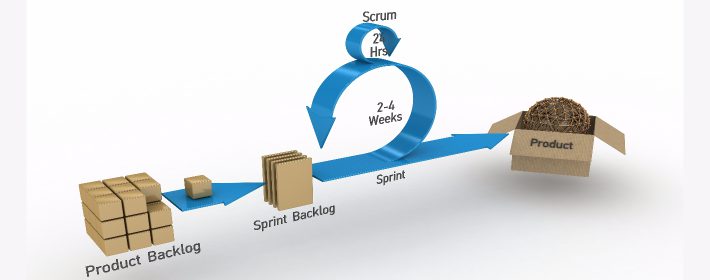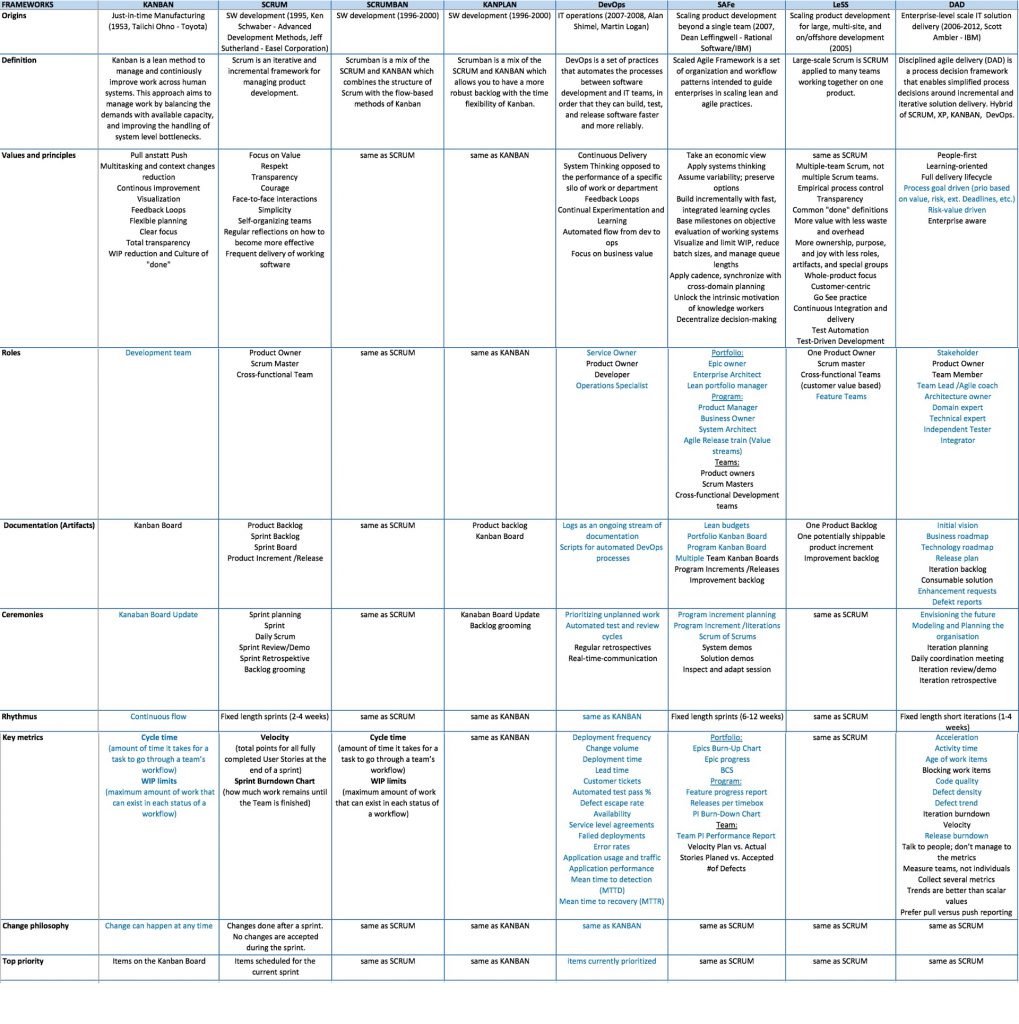X

Comparative analysis of agile frameworks
In this post we want to address a question frequently asked by our clients – what is the difference between the well-known agile frameworks – Scrum, Kanban, Scrumban, Kanplan, DevOps, Less and SAFe. Under this link you find a simple comparison based on the criteria – values and principles, role definition, artifacts, ceremonies, timing, metrics and prioritization philosophy:
Double click and zoom out to see the full picture:
Summarizing our findings from the comparative analysis we see that all agil approaches share the common values and principles – focus on value and customer, continuous improvement and delivery, self-organizing teams, visualization and transparency, simplicity, WIP and waste limitation. However they differ in the application of these values and principles by recommending different roles, artifacts and metrics and ceremonies.
Furthermore there is a major difference in the rhythmus of the work between Kanban, Kanplan, DevOps on the one hand side and Scrum, Scrumban, SAFe, LeSS, DAD on the other. While the first group follows a continuous flow the second group cuts the work in fix lengths sprint each with own goals and deliverables. Also the change philosophy follows the same pattern. For the first group a change can happen and be accepted at any time. In the second group no changes are accepted during a running sprint but rather planned for upcoming sprints.
While Scrum, Kanban, Srumban, Kanplan and DevOps have rather a single team in their focus, the frameworks LeSS, SAFe and DAD address the issue of scalability of agile principles for multiple teams and big projects. While LeSS generally seeks to apply one backlog and nominate one Product owner for all involved teams, SAFe recommends to define roles and artifacts per program level and track (level portfolio, level program, level teams).
Apart from the process-based differences we also see a different complexity degree in each framework. Assuming „1“ would be the lowest complexity degree (few rules, easy fast learning and adoption) and „5“ the highest complexity (many rules, difficult long-term learning and adoption) the frameworks would get the following relative degrees:
Source for more information:
https://www.scrumalliance.org/
https://less.works/
https://www.scaledagileframework.com/
https://devops.com/
Want to learn more about Agile Frameworks – Go to: Order an advice
[Author: Agilon GmbH, www.agil-on.com]
Copyright Ⓒ 2018 Agilon GmbH. All rights reserved.
